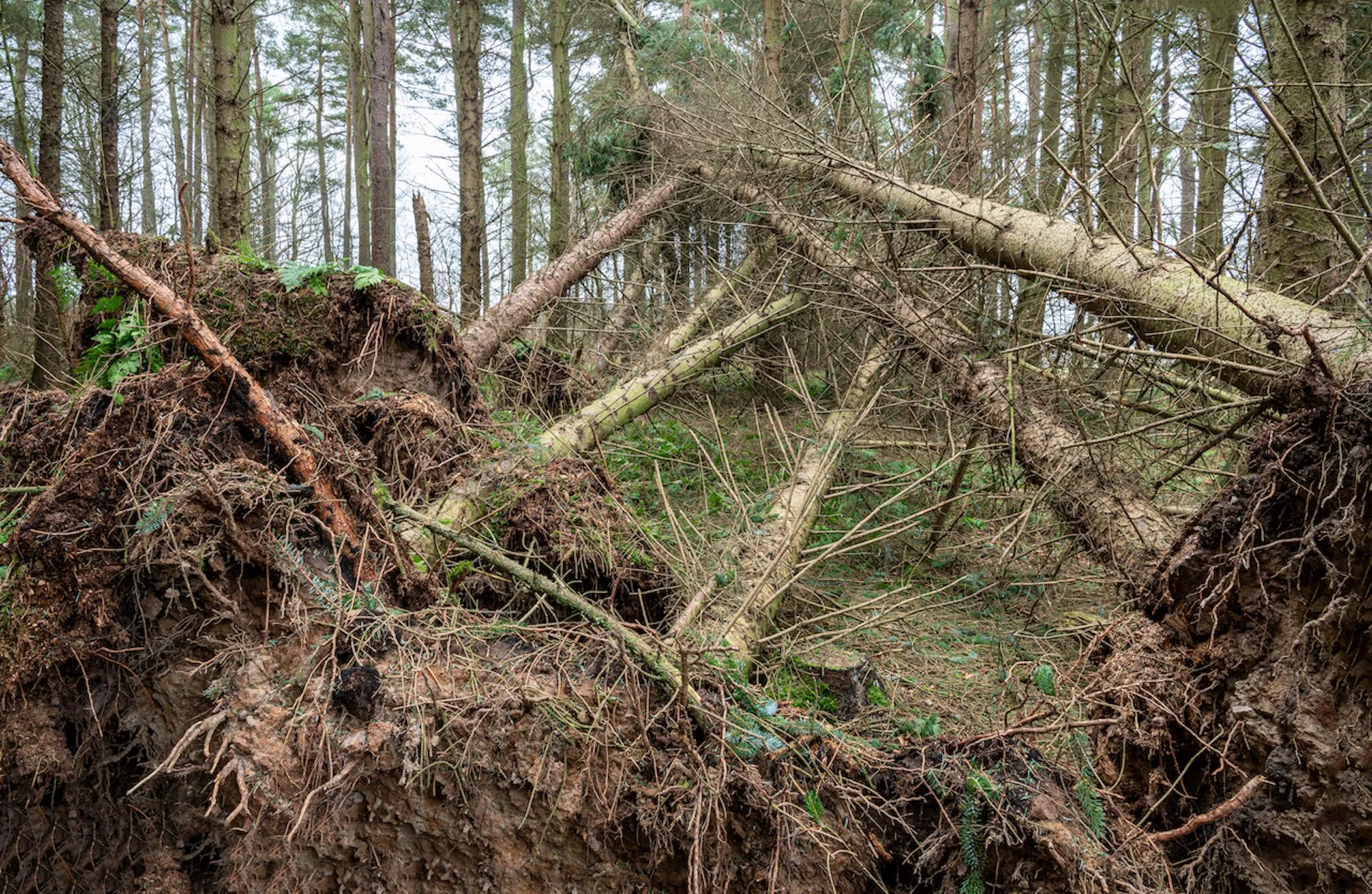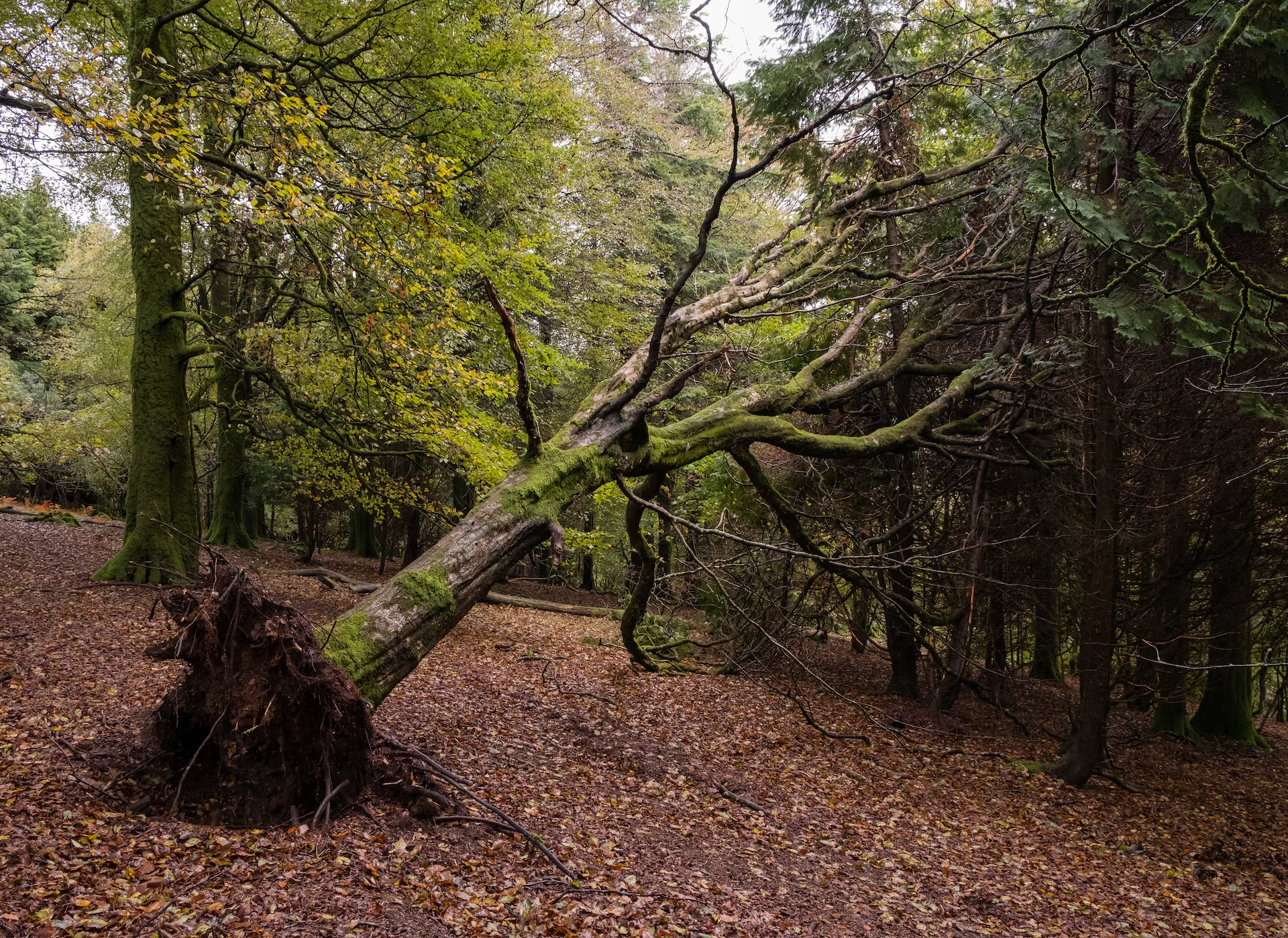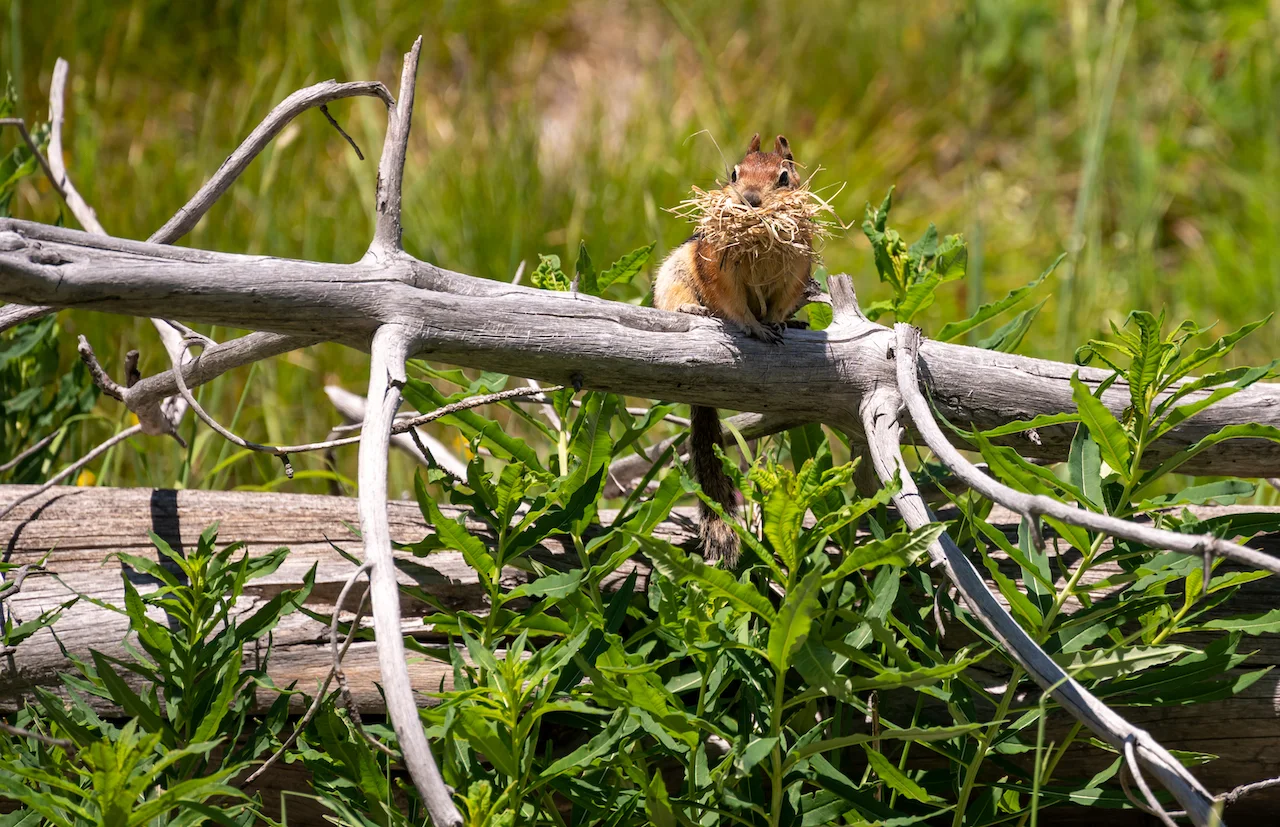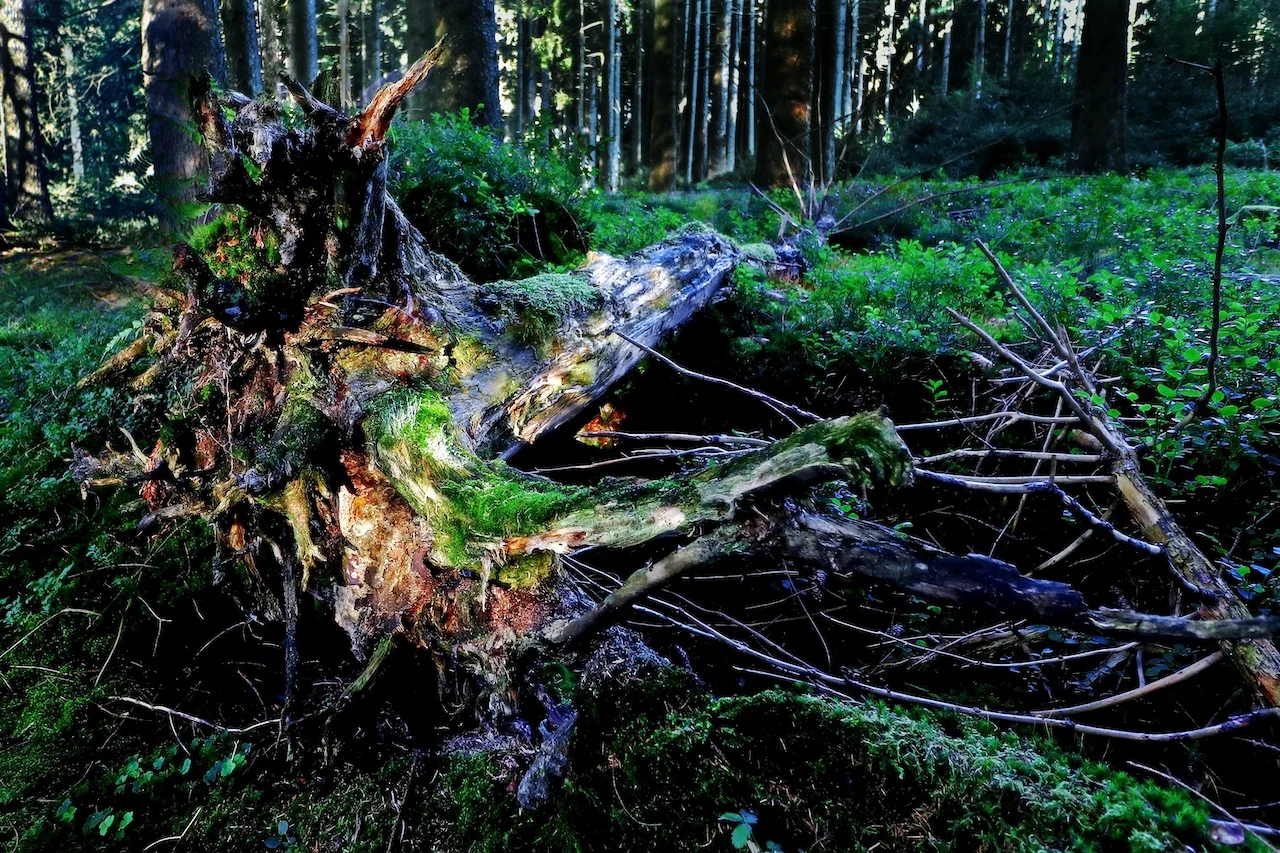
Why a 'tree's job isn't done' after a storm brings it down
Trees falling down at the mercy of Mother Nature is actually part of a healthy forest ecosystem, according to an environmental group. The dead trees provide habitat and resources for the next generation of wildlife.
Trees are knocked over by Mother Nature on a regular basis, but does that spell the end of their lives?
Well, with the damaging weather Canada sees every year, it's natural to think the answer to that question is yes, but the opposite rings true, actually.
SEE ALSO: National report reveals Canada's disaster vulnerabilities, risk areas
According to Megan Quinn, Nature Conservancy of Canada (NCC)'s co-ordinator of conservation biology in eastern Ontario, "a tree's job isn't done just when we might consider it to be dead," she told The Weather Network in a recent interview.
Quinn wrote a blog on the second chances trees are given after a storm earlier this year.
"We have such emotional connections to our trees. So, we're always a little sad when something happens to them," said Quinn. "Trees have been naturally falling down for millions of years, for as long as we have had trees."

(Getty Images-1184665055)
Death of trees 'natural' part of a healthy ecosystem
The death of trees resulting from natural events is part of a healthy forest ecosystem, Quinn said. The fallen trees provide habitat and resources for the next generation of wildlife.
Because a tree fell down in a storm, it now has a broken trunk has become a home for bats, owls, woodpeckers or flying squirrels. Then, the branches that might fall to the ground will now decompose and provide shelter for salamanders, returning vital nutrients to the soil, she explained.
"The second life becomes a habitat," said Quinn. "[It's] really important for people to remember that these forests and these trees have an interconnected system of making sure that all of those nutrients get used."

(Getty Images-1491031417)
That's why when the NCC has to cut trees down on its properties, whether it's for public safety or to clear a trail, "we make sure to leave it as natural as possible," she said.
"Something that many people don't think about is that when you have a mature forest, we actually need trees to fall down in order for new trees to grow," said Quinn.
"We let those trees decompose into the ground and return those nutrients. The tree's job isn't done just when it may have ended its natural life cycle. It still has a lot to give to the forest and to the next generation of trees."
WATCH: Urban tree selection changing as B.C. gets hotter and hotter
Trees endure lots of stress during extreme weather
Trees can tolerate a lot from Mother Nature, as the ice storm that hit eastern Ontario in April 2023 demonstrated, but eventually they can succumb to the elements and topple after exposure.
Quinn cited the event and recalled the numerous branches she found on the ground on her property, covered in 10-15 mm of ice accretion, roughly.
"When you have all of that ice on a tree branch, it gets really heavy. When you combine that with strong winds, it can easily break large branches or even bring a whole tree down if you have enough ice there," said Quinn. "Things like that can weaken our trees and weaken their ability to also stay standing."

(Getty Images-1204081955)
Sometimes you have a potent event that can weaken their root systems. For example, a rainstorm can wash away the soils that are keeping the trees' roots "really grounded in there," Quinn said.
We can't predict when a tree will fall down in a storm. Sometimes it's just "a matter of luck."
"Sometimes you get a tree that can survive one storm, and it seems to be doing really well, only [for it] to get brought down in the next one," said Quinn.
Wildfires can also be "really disruptive to a forest," Quinn said, as trees can die due to overexposure to the flames when they burn.
However, fires are also a part of many of our tree ecosystems, forcing species to evolve over time to naturally be adapted to these blazes when they happen.

(Getty Images - 172296371)
However, you can have too much of a good thing.
"The problem is when we have really frequent, really intense fires that we aren't used to having at certain times of the year," said Quinn. "We have some species that are very tolerant to drought, tolerant to heavy rain, tolerant to fire, [and tolerant to] being struck by lightning, but too much too often can be really detrimental to these systems."
Trees are 'cleverer' than we think
Quinn often gets phone calls from "well-meaning" neighbours asking, "why [does] the forest look so messy?"
“If you think about it in nature, when a tree falls down, someone doesn't come to chop it up and haul the wood away. That wood is still serving a really important purpose as it decomposes," said Quinn. “Nature doesn't seem to mind too much when a tree falls down. It just creates new opportunities and [provides] a new renovation to the neighbourhood.”
The NCC co-ordinator of conservation biology said "trees are a lot cleverer than we sometimes give them credit for."

(Getty Images-862098112)
"When you think about it, the tree has fallen down. And now there's that space that's opened up in the canopy. It's going to let in light and [that] gives the smaller, younger trees the room they need to grow and fill in the space," said Quinn.
The process of trees falling over isn't always positive, however.
For example, once trees situated on the outside edge of a forest get replaced by development, this will have a negative effect on their successors that used to be in the centre of the ecosystem. The trees taking the outside spots will lose the protection they once had from the species that are now gone.
"What happens in those cases is there are trees that are now on the edge [that] didn't grow being exposed to those heavy winds and storms, so this can make them weaker and more prone to falling down," said Quinn.

(Connor O'Donovan/The Weather Network)
This is where the Nature Conservancy of Canada comes in, as well.
As Canada's largest land-conservation charity, it has protected more than 35 million acres of "important habitat" across the country, Quinn said, including some particularly vital forests.
"When we conserve that land, we also steward and restore it to make sure it's resilient. That might include planting trees to extend the forest edge or removing invasive species, [which] weakens forests," said Quinn. "By protecting an entire forest, we can give those trees and the species that depend on them a fighting chance to make it through the next storm."
While our forests are remarkably resilient, increases in the frequency and intensity of weather events and other negative environmental changes will put trees under more pressure.
“Combined with some of the other things that we're seeing, like expanding forests, pests, and diseases that are able to move more freely due to our changing climate, these are killing trees and weakening them at a much faster rate than we would naturally see," said Quinn.
WATCH: Living near a green space could have some amazing health benefits
Thumbnail courtesy of Getty Images-1363963137.
Follow Nathan Howes on Twitter.











